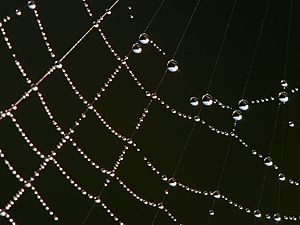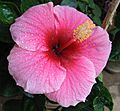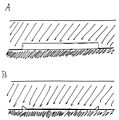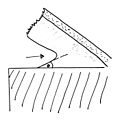Adhesion facts for kids
Adhesion is when two different things stick together. Imagine glue holding paper, or water drops staying on a window. This is adhesion at work. When similar things stick together, like water molecules forming a drop, it's called cohesion.
Adhesion happens because of special forces between the surfaces of two materials. Scientists are still learning all the ways these forces work. However, they have suggested five main types of adhesion:
- Mechanical adhesion: This is like a hook-and-loop fastener (Velcro). The adhesive material fills tiny holes or rough spots on a surface. It then hardens or locks into place, holding the two things together.
- Chemical adhesion: Here, the two materials actually form a new chemical bond where they meet. It's like they become one new substance at the surface. This creates a very strong connection.
- Dispersive adhesion: This type of adhesion is caused by tiny, temporary electrical forces called Van der Waals forces. These forces are always present between atoms and molecules. They are often weak, but when many of them act together, they can make things stick.
- Electrostatic adhesion: This happens when two materials have opposite electrical charges. Just like static electricity makes a balloon stick to a wall, these charges attract each other and hold the materials together.
- Diffusive adhesion: This type of adhesion happens when two materials, often polymers (long chains of molecules), mix together at their surface. It's like two soft, gooey substances slowly blending into each other where they touch. This creates a strong bond as their molecules intertwine.
Images for kids
-
A concave meniscus forms when a liquid sticks to the sides of its container.
-
Cohesion makes water form drops. Surface tension helps them stay round. Adhesion keeps the drops in place.
-
Water droplets look flatter on a Hibiscus flower. This shows good adhesion between the water and the flower.
See also
 In Spanish: Adhesión para niños
In Spanish: Adhesión para niños








